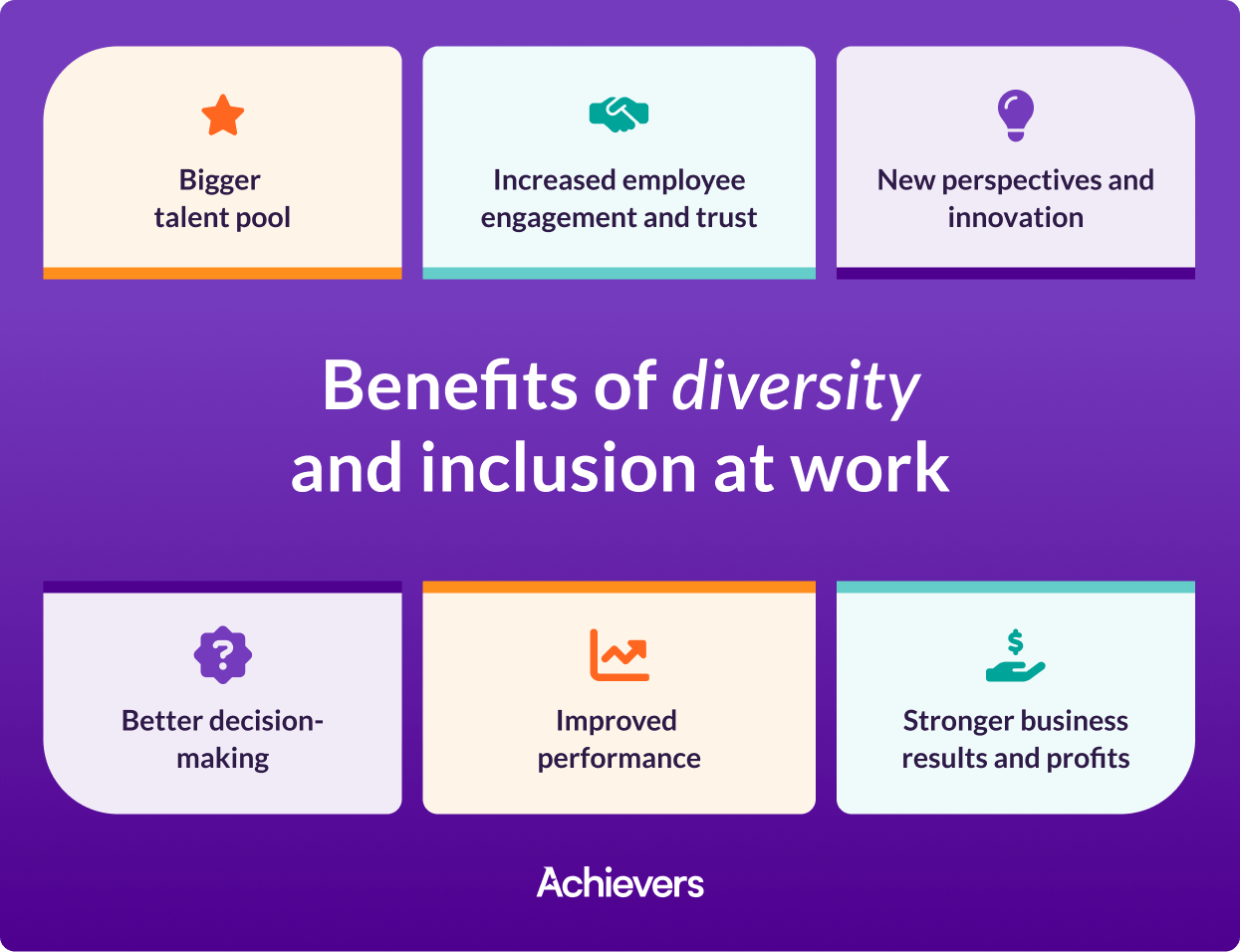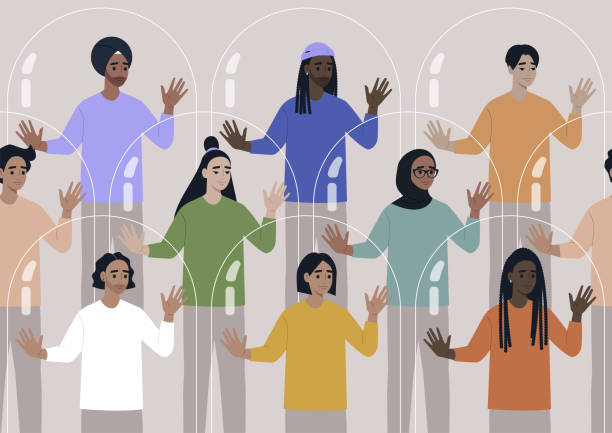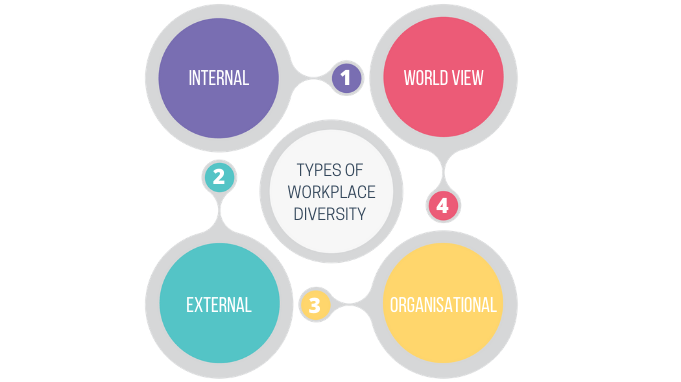 |
| Figure 01 - https://staffinghub.com/diversity/5-steps-to-create-a-diversity-and-inclusion-action-plan/ |
Introduction to Diversity and Inclusion
Define Diversity and Inclusion: Diversity pertains to the range of distinctions that exist amongst individuals, encompassing factors such as socioeconomic status, gender, age, race, ethnicity, sexual orientation, handicap, and religion, among others (Cox & Blake, 1991). Regardless of differences, inclusion entails fostering an atmosphere in which everyone is treated with respect, valued and welcomed (Thomas & Ely, 1996).
Importance of Diversity and Inclusion: Diverse viewpoints and life experiences foster creativity, invention, and problem-solving skills (Page, 2007). According to Deloitte (2019), inclusion promotes employee productivity, engagement, and a sense of belonging, which improves performance and retention rates.
Key Components of Diversity and Inclusion Initiatives: Workplace policies and procedures (NCBI, 2012), leadership commitment (SHRM, 2020), employee resource groups (ERGs) (Catalyst, 2020), training and education (Cox, 1994), and recruiting and hiring methods (Kalev et al., 2006) are some of the components.
Benefits of Diversity and Inclusion
 |
| Figure 02 - https://www.achievers.com/blog/diversity-and-inclusion/ |
Increased Innovation and Creativity: Diverse teams approach problem-solving with a range of viewpoints, concepts, and methods (Hong & Page, 2004). Employees are more likely to offer their special knowledge and insights in inclusive work environments, which produces more creative ideas and goods (Groysberg & Bell, 2013).
Improved Employee Engagement and Retention: Employee loyalty and a sense of belonging are fostered by inclusive environments (Gartner, 2019). Engaged workers are more driven, effective, and content with their positions, which reduces attrition and increases retention (Gallup, 2020).
Enhanced Organizational Performance: Initiatives promoting diversity and inclusion have been connected to higher customer satisfaction and financial results (McKinsey, 2020). Diversity and inclusion-focused companies are better positioned to draw and keep top people, which improves business results (Deloitte, 2018).
Better Decision-Making: When making decisions, diverse teams take a broader range of perspectives and possible consequences into account (Nishii & Raver, 2003). Decisions made through inclusive procedures are more ethical, effective, and well-informed, and they are advantageous to the company and its stakeholders (Herring, 2009).
Positive Reputation and Brand Image: Companies that put diversity and inclusion first are perceived by investors, consumers, and future workers as being more socially conscious and appealing (Edelman, 2019). Brand loyalty and competitiveness in the market are increased by a favorable reputation for diversity and inclusion (Dobbin & Kalev, 2016).
Challenges and Barriers
 |
Figure 03 - https://cloud.name-coach.com/overcoming-barriers-to-diversity-and-inclusion/
Unconscious Bias: According to Banaji and Greenwald (2013), unconscious biases have an impact on hiring, performance evaluation, and recruitment decisions. Diversity-focused hiring procedures, organized decision-making procedures, and awareness training are some methods for reducing bias (Paluck & Green, 2009).
Systemic Discrimination: According to Pager and Shepherd (2008), systemic obstacles impede the progress of marginalized groups and sustain inequity. Diversity education, inclusive leadership techniques, and legislative reform are necessary to combat systematic discrimination (Dobbin et al., 2015). Absence of Leadership Commitment: According to Ely and Thomas (2001), the success of diversity and inclusion efforts depends on the buy-in and support of the leadership. Leaders need to show their commitment by setting policies, allocating resources, and taking appropriate action (SHRM, 2020).
Opposition to Change: Efforts to promote diversity and inclusion may be hampered by opposition to change and a fear of the unknown (Kotter & Schlesinger, 2008). Stakeholder participation, education, and clear communication are necessary to overcome resistance (Lewin, 1951).
Key Components of Diversity and Inclusion InitiativesFigure 04 -https://blog.vantagecircle.com/diversity-and-inclusion/
Hiring and Recruitment Procedures: According to SHRM (2020), inclusive hiring procedures draw in a varied pool of talent and advance justice and equity in the employment process. Various techniques include blind resume screening, organized interviews, and recruiting a wide pool of candidates (Dobbin & Kalev, 2016).
Training and Education: According to Green et al. (2008), diversity and inclusion training helps staff members become more conscious, empathetic, and culturally competent. Employee understanding of the value of inclusion and diversity in the workplace is ensured by ongoing education (Glauser et al., 2017).
Employee Resource Groups (ERGs): According to Catalyst (2020), ERGs offer advocacy, networking opportunities, and assistance to underrepresented groups. By encouraging a feeling of community and belonging among workers, ERGs support diversity and inclusion (Thomas et al., 1999).
Leadership Accountability and Commitment: Leaders hold themselves accountable and set the standard for initiatives promoting diversity and inclusion.
ConclusionInitiatives promoting diversity and inclusion are essential for developing work environments that value individuality, make use of a range of skills, and promote a sense of mutual respect and community. These kinds of programs have advantages that go beyond just being morally right; they also foster creativity, employee engagement, and improved organizational performance. But to enjoy these advantages, you must overcome several formidable obstacles, such as institutional discrimination, unconscious bias, and resistance to change. A thorough strategy that includes efficient hiring and recruitment procedures, focused training and education, the assistance of Employee Resource Groups (ERGs), and, most importantly, sincere leadership accountability and commitment is required to be successful in this attempt. Organizations that prioritize and successfully execute diversity and inclusion initiatives will not only distinguish themselves as socially conscious entities but will also have a competitive advantage in luring talent, meeting customer needs, and realizing sustainable growth as they continue to navigate the intricacies of the global market.
ReferencesBanaji, M.R., & Greenwald, A.G. (2013). Blindspot: Hidden Biases of Good People. Delacorte Press.
Catalyst. (2020). Employee Resource Groups: Fostering Diversity, Equity, and Inclusion at Work. https://www.catalyst.org/research/ergs/](https://www.catalyst.org/research/ergs/
Cox, T., & Blake, S. (1991). Managing cultural diversity: Implications for organizational competitiveness. The Executive, 5(3), 45-56.
Deloitte. (2018). The Deloitte Global Human Capital Trends. https://www2.deloitte.com/global/en/pages/human-capital/articles/introduction-human-capital-trends.html](https://www2.deloitte.com/global/en/pages/human-capital/articles/introduction-human-capital-trends.html
Dobbin, F., & Kalev, A. (2016). Why Diversity Programs Fail. Harvard Business Review. https://hbr.org/2016/07/why-diversity-programs-fail](https://hbr.org/2016/07/why-diversity-programs-fail
Edelman. (2019). 2019 Edelman Trust Barometer. https://www.edelman.com/trustbarometer](https://www.edelman.com/trustbarometer
Gallup. (2020). State of the American Workplace. https://www.gallup.com/workplace/238085/state-american-workplace-report-2017.aspx](https://www.gallup.com/workplace/238085/state-american-workplace-report-2017.aspx
Gartner. (2019). Diversity and Inclusion Build High-Performance Teams. https://www.gartner.com/smarterwithgartner/diversity-and-inclusion-build-high-performance-teams/](https://www.gartner.com/smarterwithgartner/diversity-and-inclusion-build-high-performance-teams/
Groysberg, B., & Bell, D. (2013). Dysfunction in the boardroom. Harvard Business Review, 91(6), 88-97.
Hong, L., & Page, S. (2004). Groups of diverse problem solvers can outperform groups of high-ability problem solvers. Proceedings of the National Academy of Sciences, 101(46), 16385-16389.
McKinsey. (2020). Diversity wins: How inclusion matters. https://www.mckinsey.com/~/media/mckinsey/featured%20insights/Diversity%20and%20Inclusion/Diversity%20wins%20How%20inclusion%20matters/Diversity-wins-How-inclusion-matters-vF.pdf
Nishii, L.H., & Raver, J.L. (2003). Diversity and inclusion in the workplace: A review, synthesis, and future research agenda. Annual Review of Psychology, 54, 545-568.
Page, S.E. (2007). The Difference: How the Power of Diversity Creates Better Groups, Firms, Schools, and Societies. Princeton University Press.
SHRM. (2020). How to Develop a Diversity, Equity, and Inclusion Initiative. https://www.shrm.org/resourcesandtools/tools-and-samples/toolkits/pages/developingadiversityinclusioninitiative.aspx
Thomas, D.A., & Ely, R.J. (1996). Making differences matter: A new paradigm for managing diversity.Harvard Business Review, 74(5), 79-90.
|




This article successfully puts forth the importance of diversity and inclusion in the workplace, highlighting their benefits such as increased innovation, employee engagement, improved organizational performance, and positive reputation.
ReplyDelete👍appreciate your comment
ReplyDelete